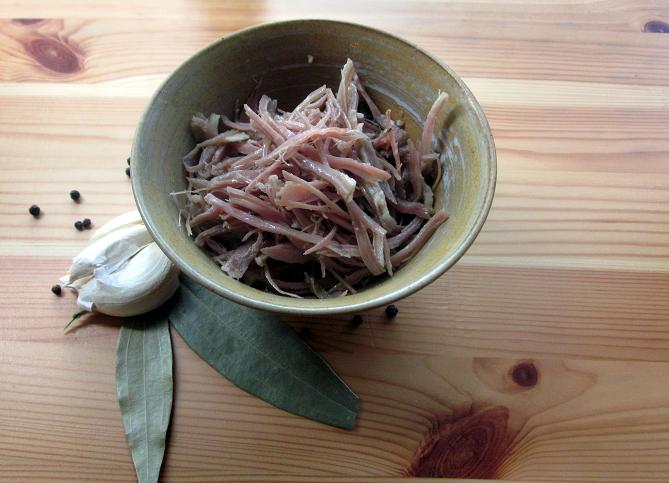 Duck is, by far, my favourite thing to cook and eat. Tender, juicy, deep ‘n woodsy, fat and formerly feathery. Fantastic in every way!
Duck is, by far, my favourite thing to cook and eat. Tender, juicy, deep ‘n woodsy, fat and formerly feathery. Fantastic in every way!
I always buy whole ducks, either from the store (usually frozen) or from a local farm (like Christine’s Quackery in Comox) and process ‘em myself. The breasts get sautéed, stuffed, roasted or whatever, the bones get cleaned up and go into a stockpot, the excess fat is carefully removed from all over the bird, chopped finely and rendered, and the legs… Ahh, the legs. They get some extra special treatment. The whole thing is like an event. Duck Day! Hurray!
Confit de canard (preserved duck) is a very old school dish from southern France (specifically Dordogne and Gascony) that relies on salt, fat and a ‘heapin helping of pre-Chlorofluorocarbon know-how to keep duck legs safe to eat for long periods of time.
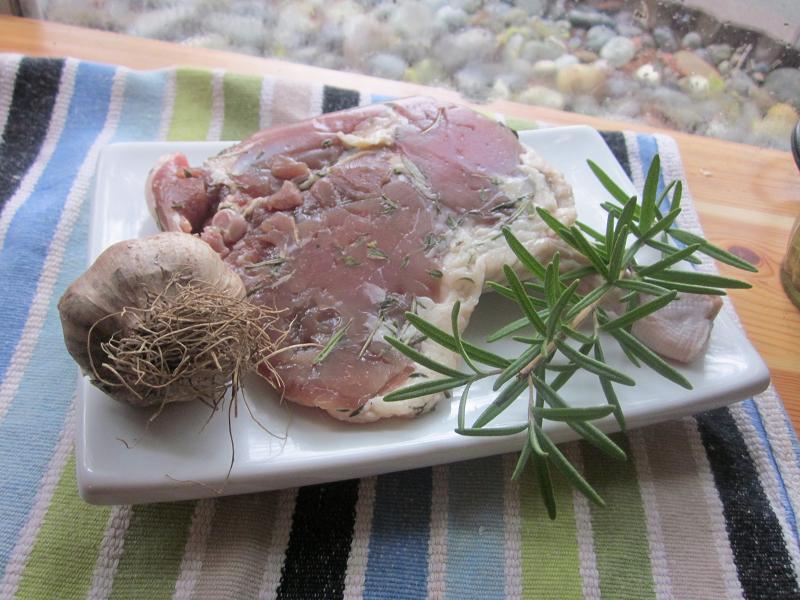 Confit comes from the French word confire, meaning “to preserve”. Back before refrigeration, confit was the primary preservation method for ducks and geese (staple proteins in the old-world). If you were a medieval French farmer and you wanted to keep your prized duck edible long enough to last the winter, or just for a picnic with the landowners next weekend you would have to take steps to keep it safe from bacteria. The duck legs were cleansed with coarse salt and slowly simmered in rendered duck fat for hours at low temperatures. The dense fat, filled with sterile salt slowed the bacteria from their rotten work and allowed the meat, submerged in that same fat for months, to last until the family (or greedy nobility) needed to eat it. For more in-depth history on this, and other culinary gems from Gascony, hit up the D’Artagnan Website.
Confit comes from the French word confire, meaning “to preserve”. Back before refrigeration, confit was the primary preservation method for ducks and geese (staple proteins in the old-world). If you were a medieval French farmer and you wanted to keep your prized duck edible long enough to last the winter, or just for a picnic with the landowners next weekend you would have to take steps to keep it safe from bacteria. The duck legs were cleansed with coarse salt and slowly simmered in rendered duck fat for hours at low temperatures. The dense fat, filled with sterile salt slowed the bacteria from their rotten work and allowed the meat, submerged in that same fat for months, to last until the family (or greedy nobility) needed to eat it. For more in-depth history on this, and other culinary gems from Gascony, hit up the D’Artagnan Website.
Okay, so that was then, this is now… Why, in our modern plastic-fantastic age of home refrigeration units is some culinary dinosaur like confit still relevant? Because it turns out simmering dark duck meat in duck fat for hours produces the sexiest food ever made. It’s melt-in your mouth tender, salty and deeply savoury. Nothing, and I mean nothing tastes better than duck confit… Nothing… Ever.
This recipe is short on ingredients and relatively simple, but there are a number of steps spread out over a couple of days. Plan this for a rainy weekend at home, and keep a bottle of Pinot Gris handy, for… Well, just always have a bottle of wine handy. Duck Day! Hurray!
Duck Confit (Makes 2 legs worth, about 220g shredded, plus approx. 250ml or 1 cup of fat)
Ingredients
- 2 Muscovy Duck Legs (they weight about 450g total, or roughly a pound.)
- 1 ½ tbls Coarse Salt
- 1 tsp. Fresh Thyme
- 1 tsp. Black Peppercorns
- Duck Fat trimmed from Duck Carcass (should be near to 225g worth, or about 8 oz. finely chopped)
- 100ml Vegetable Oil (Or just over 3 ¼ oz.)
- 1 Bay Leaf
- 1 Sprig of Fresh Rosemary
- 1 Whole Bulb of Garlic (Stem removed)
Method
Day One – The Salting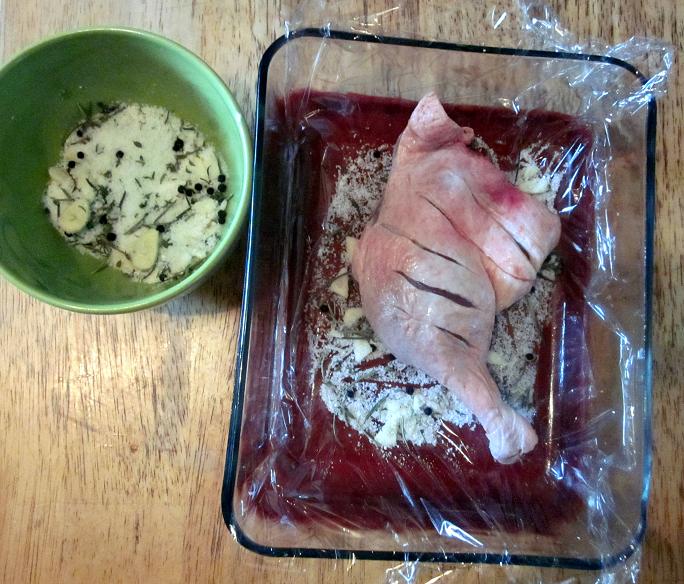
- So let’s get to it! We’ve got the duck legs removed from the bird, and we’ve got all the fatty bits carved off of the neck, and various cavities (Oh yeah, that sounds nasty). Set the fat aside, wrapped, in the fridge and focus on the legs.
- Take a sharp knife and score the skin of the duck legs three or four times. Not too deep! This is just so that a bit of the flesh is exposed. Take the salt, thyme and peppercorns and mix them together. Rub them all over both legs, making sure to get a bit into those slashes that you’ve made. Wrap and refrigerate the salted legs overnight.
Day Two – The Preserving (Pre-heat your oven to 300˚F)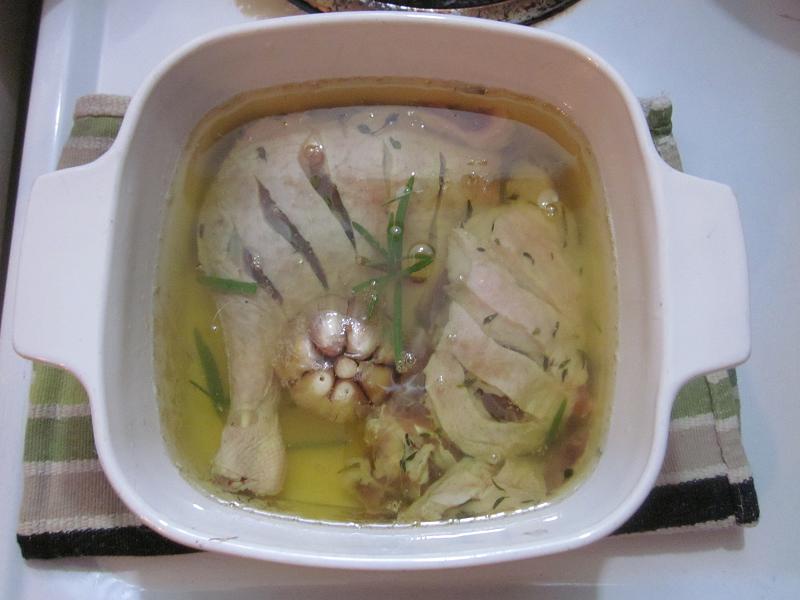
- Remove the salted legs from the fridge and rinse them off lightly under cold water. Pat the legs completely dry and set aside. You’ll notice that the flesh has become a little bit shriveled and “tacky”, that’s perfect!
- Take the solid duck fat from the fridge and plop it into a sauce pan over low heat with the vegetable oil. Over the course of the next hour and a half the duck solids will release all the liquid fat. Rendering! Strain the liquid fat into an oven-proof container with the duck legs, bay leaf, rosemary and whole garlic clove. The liquid should cover the duck legs completely. If not, add a bit more vegetable oil to it until they do. No-one will criticise you for having über-lean ducks.
- Cover the container with a lid or foil and place it into the oven for 2 ½ to 3 hours. During this time the fat will lightly simmer the duck legs into ultimate tenderness. If you aren’t sure if they’ve been in long enough, just leave them in a ½ hour longer. They won’t overcook at this low temperature. In fact, back in the ‘ol days they would simmer them for days!
- Take the container out of the oven, remove the garlic (set aside) and herbs (throw away) and just let the duck and fat rest at room temp for ½ hour. In medieval times they would just let the duck sit in this container forever in the barn, but we’ll just carefully remove the legs from the fat, place them into a clean non-reactive container and strain the fat overtop. The leg/fat container can sit in your fridge for up to three months. No kidding! The garlic you can use like a condiment and squeeze out from the bulb like roasted garlic cloves, but so much more… Duckier. Bonus!
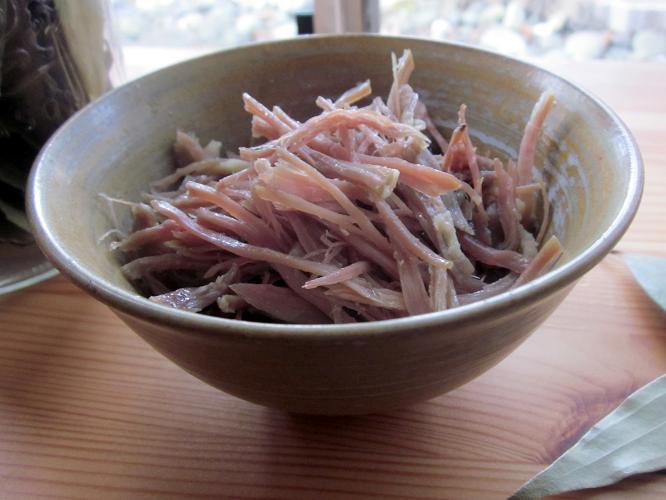 Now that you have some duck confit in your back pocket, you can use it in lots of different dishes. Some very traditional French uses include : Cassoulet, Rillettes, Garbure, or just crisped in a hot pan and served with Pomme Frittes and Frisee. Like most charcuterie, you may have noticed duck confit popping up on menus a lot lately. It’s become crazy trendy and is used in a variety of nontraditional ways. Duck tacos anyone?
Now that you have some duck confit in your back pocket, you can use it in lots of different dishes. Some very traditional French uses include : Cassoulet, Rillettes, Garbure, or just crisped in a hot pan and served with Pomme Frittes and Frisee. Like most charcuterie, you may have noticed duck confit popping up on menus a lot lately. It’s become crazy trendy and is used in a variety of nontraditional ways. Duck tacos anyone?
I shredded my confit off of the bone, and I’m thinking I’ll add mine to pasta… We’ll see.
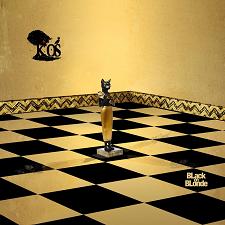 Music To Cook This Too:
Music To Cook This Too:
K-os – BLack on BLonde
2 thoughts on “Duck Confit”